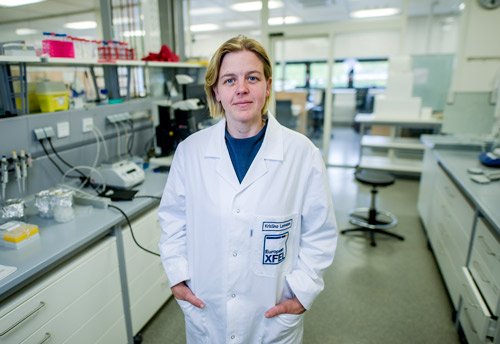Exploring STEM concepts through the lens of the COVID-19 pandemic Inspire article
Ideas for how to use the COVID-19 pandemic to bring curriculum STEM concepts into focus.
One of the difficulties in engaging students with science and maths teaching is that it can sometimes seem very abstract. Students often ask “when will I ever need to know this?” The COVID-19 pandemic has really brought science to the forefront of people’s everyday lives; as such, it’s an opportunity to discuss STEM concepts with students in a real-world context and demonstrate why they are relevant and important. Over the past year, we have published several articles to facilitate the discussion of curriculum topics in the context of the global pandemic, which are summarized below.
1. Understand – Pulling together: a collaborative research approach to study COVID-19
This article from European XFEL provides insight into how scientists responded to the challenge presented by the pandemic. The focus here is not so much on the scientific details but on how research is done, which is something most students (and adults for that matter) don’t have a clear idea of.

©European XFEL/Axel Heimken
2. Understand – Clinical trials count on more than statistics
There has been a great deal of misunderstanding during the pandemic on the part of the public and even politicians regarding the science. This has had important consequences for public health, for example noncompliance with measures to stop the spread of infection. Some of the most serious of these misunderstandings have arisen less from a lack of knowledge of the scientific details than a lack of understanding of how scientific knowledge is gained. The hydroxychloroquine debacle is a good example, and this article explains what went wrong; what key factors need to be taken into account in clinical research, and why headline results might not be all they seem.

3. Understand – How to understand a COVID-19 test result
Another area where there has been a great deal of public misunderstanding is that of COVID tests and how to interpret a negative test result. This is partly due to a lack of understanding of the basic concepts of specificity and sensitivity, but also due to ignoring the influence of pre-test probability. This article helps to explain this rather counterintuitive principle, which applies to most yes/no medical and environmental tests. It also contains an interactive infographic from the BMJ to help students understand how pre-test probability affects the outcome.

4. Understand – Vaccines in the spotlight
Vaccination has been key in containing the pandemic. However, despite the fact that vaccination is a well-proven strategy that has saved countless lives over the decades, vaccine hesitancy is a real problem. The new technologies that have gone into the COVID-19 vaccines and the unusually short development times have increased people’s concerns and given anti-vaxxers additional opportunities to spread misinformation. This article explains the different types of vaccines and how they work, and also provides some information about the development of the COVID-19 vaccines.

5. Teach –
Exponential growth 1: learn the basics from confetti to understand pandemics
Exponential growth 2: real-life lessons from the COVID-19 pandemic
Maths can be one of the most difficult subjects to show the everyday relevance of, but the COVID-19 pandemic has really highlighted why it is important for people to understand fundamental mathematical principles. Early in the pandemic, it was clear that many people didn’t understand the concept of exponential growth, which is not easy to visualize intuitively. As a result, they didn’t take the infection rates and recommended containment measures in their countries seriously until it was much too late. The example that is most often used to teach this concept is compound interest, but for children who don’t really have their own money yet, this can make it seem more rather than less abstract. These two articles, aimed at students aged 11–13 or 14–16 years, explain the basic principles using teaching activities based on simple examples such as folding paper or the classical story of rice grains on a chessboard. They then explain how this relates to exponential growth during an epidemic, with exercises to help students understand concepts like R, R0, and doubling times, as well as how containment measures such as social distancing affect the rate of disease spread.

Don’t stop there
I hope that these articles, along with the online resources we’ve selected to go with them, will be useful in engaging your students and showing them the value of science. However, it doesn’t need to end there. Although epidemiology is the first field that springs to mind when thinking of science relating to the pandemic, research into COVID-19 and how to deal with it has spanned a wide range of fields, with relevance to almost all school STEM subjects (as well as some non-STEM subjects like politics and economics). There are many additional links that teachers could bring into their lessons depending on their subject and interests. For example, the fabrication of face masks involves materials and engineering, a lot of chemistry work was needed to modify RNA so that it can be used in vaccines, and the biophysical techniques that allowed scientists to determine the proteins structures of the viral proteins are based on physical principles like diffraction. You could even challenge older students to research something like COVID-19 vaccine development and list at least one contribution from each of four or five different STEM subjects. There is no better demonstration of the importance of multidisciplinary research.





